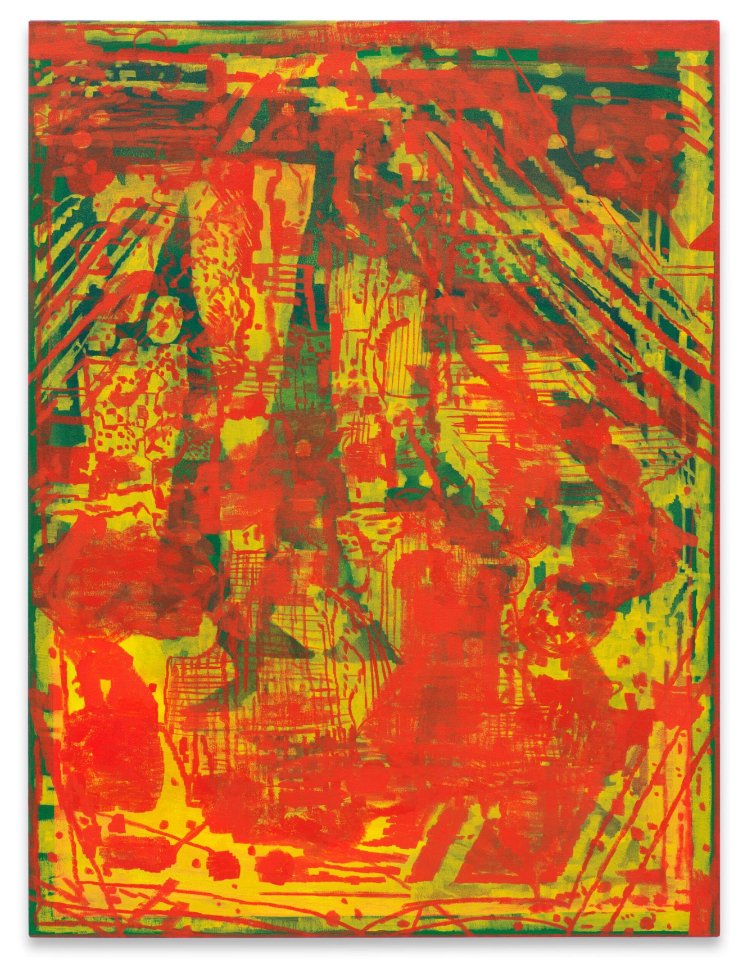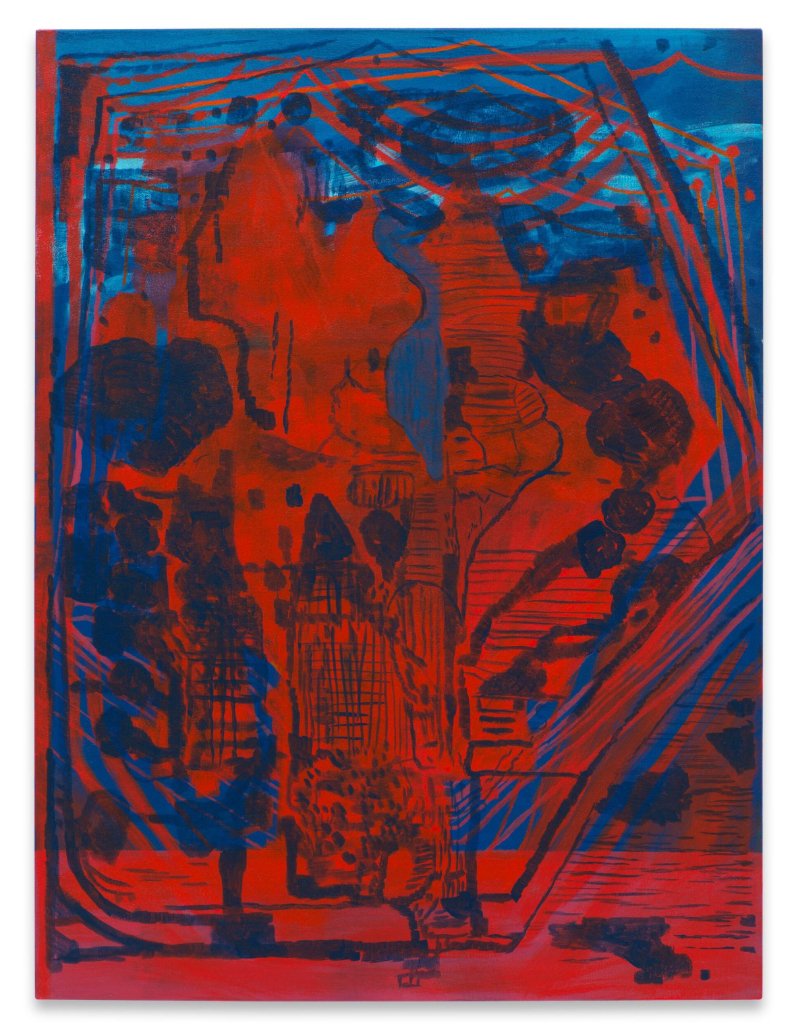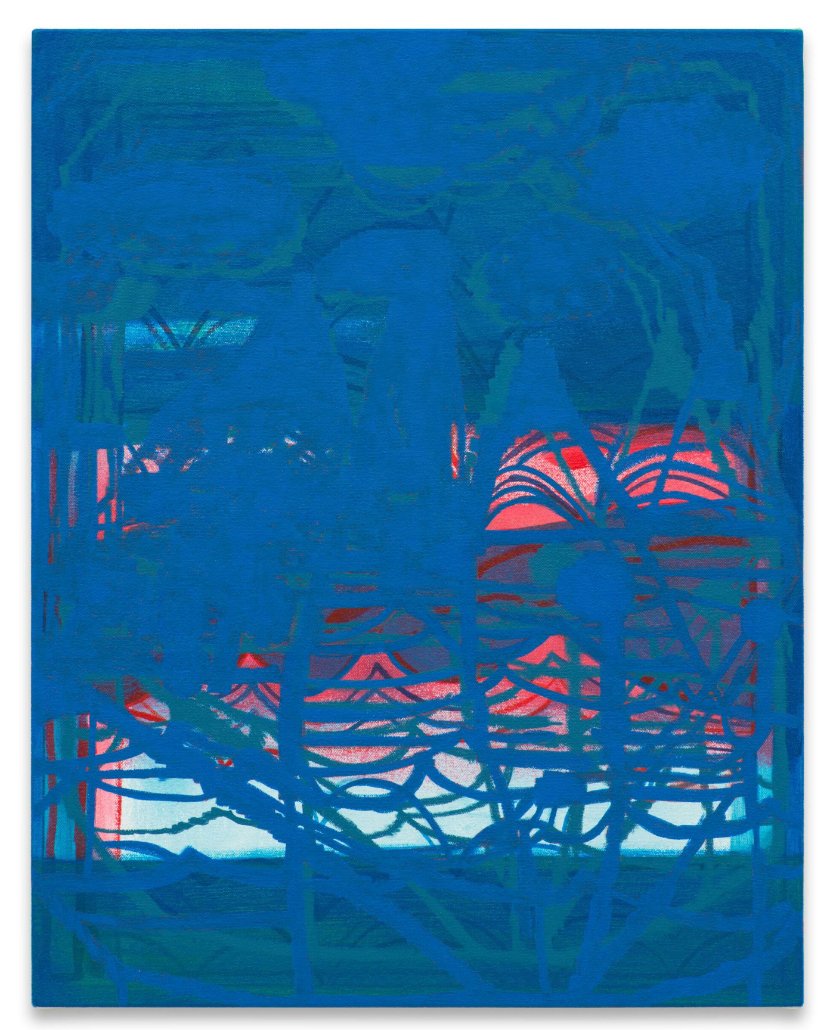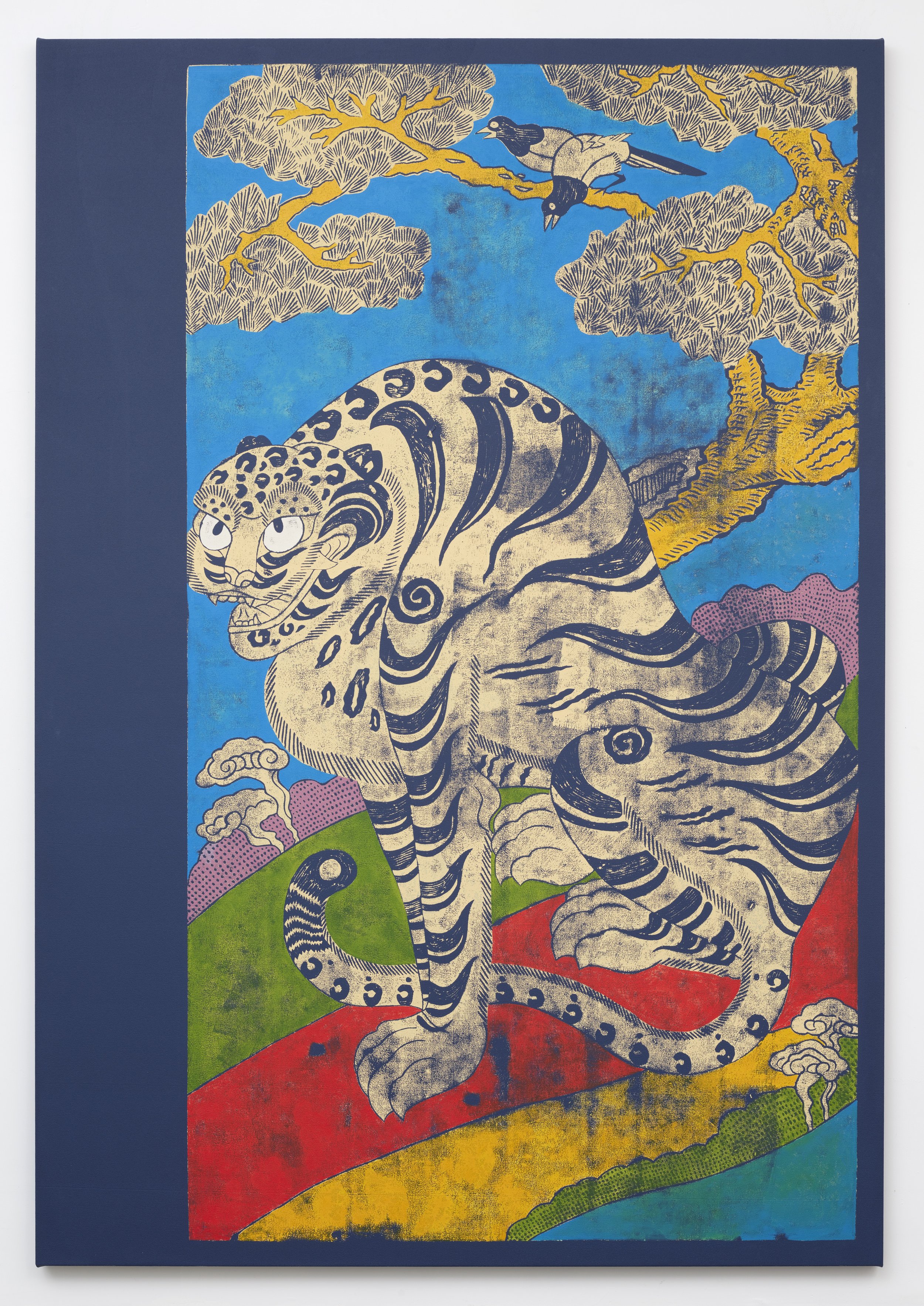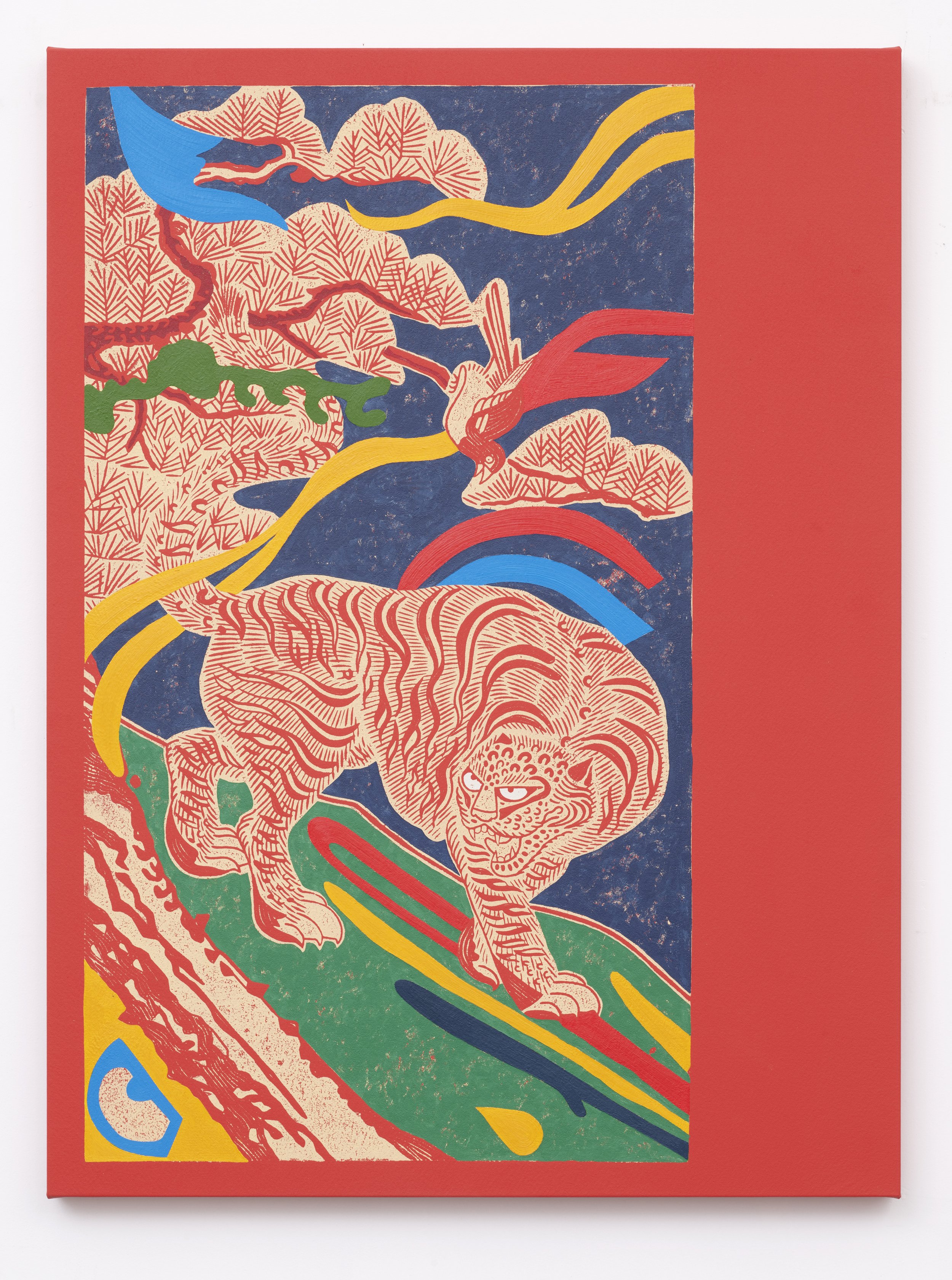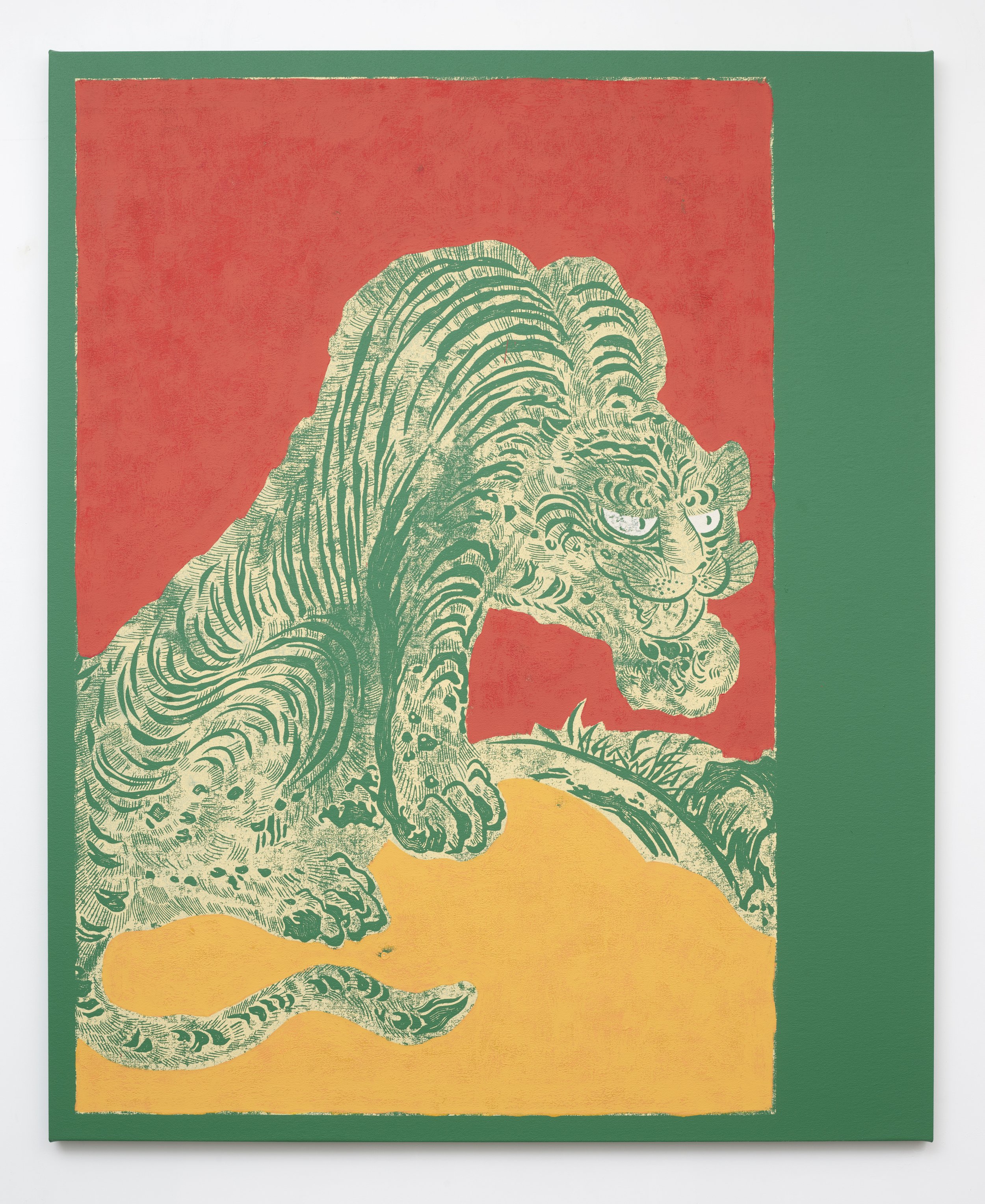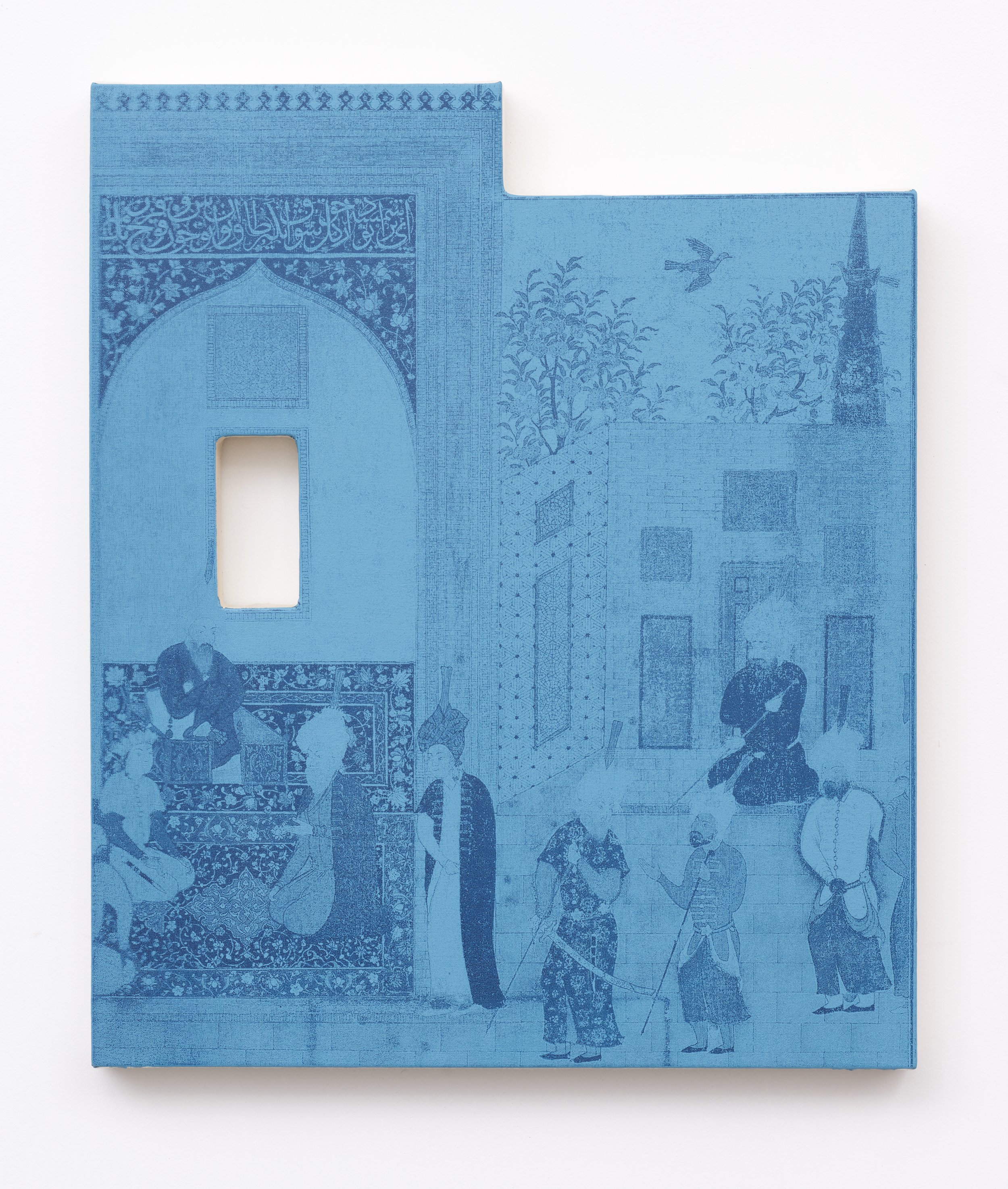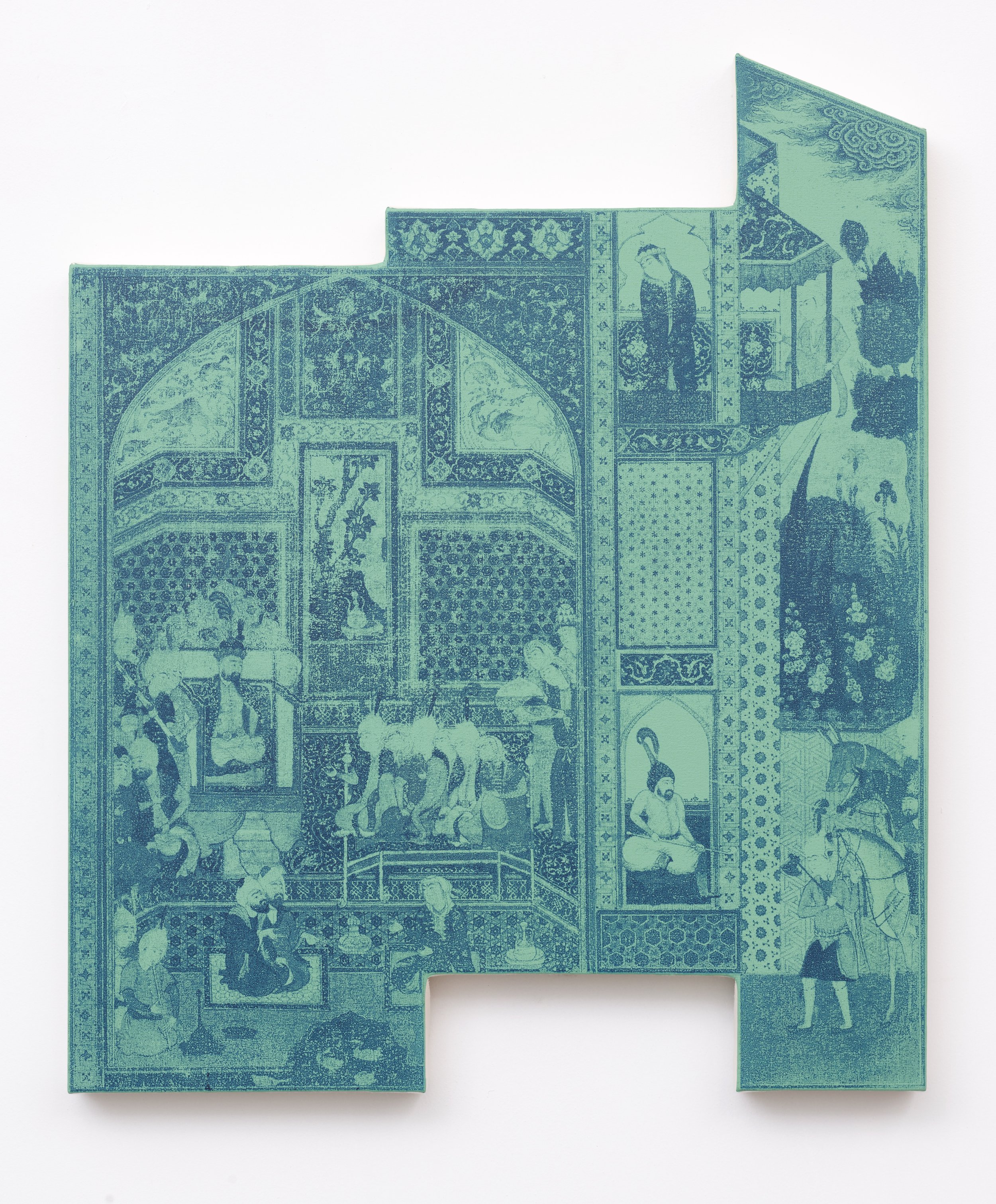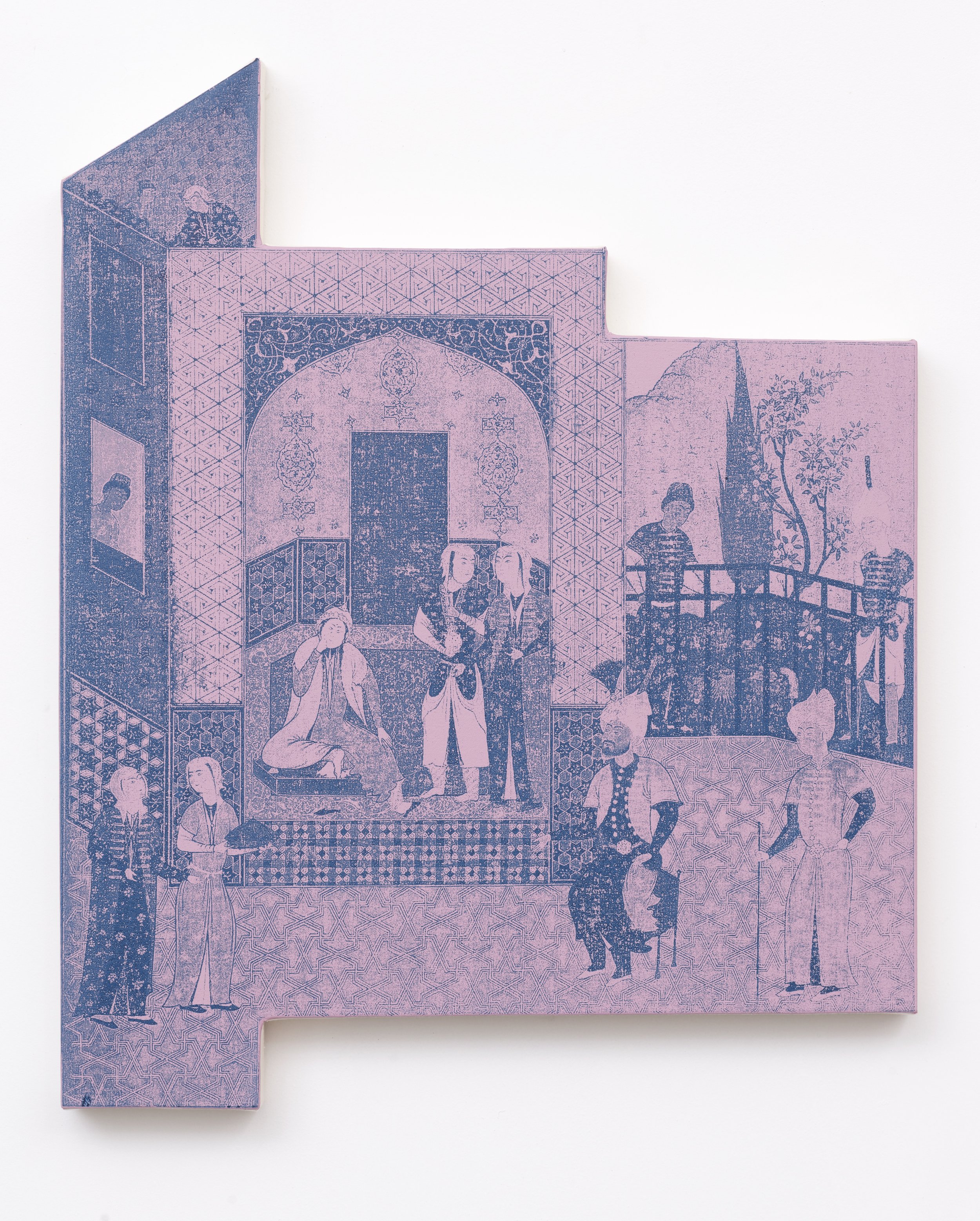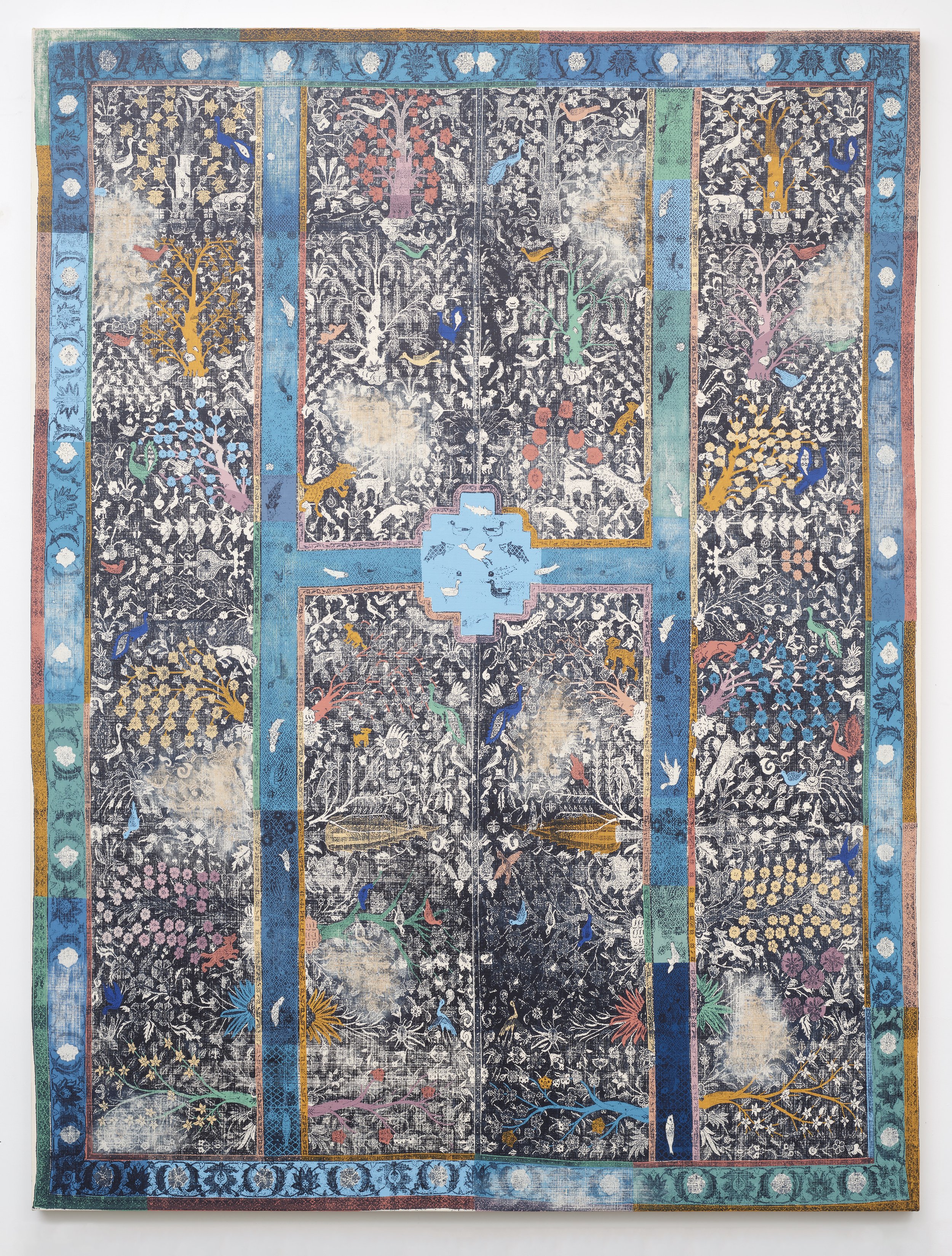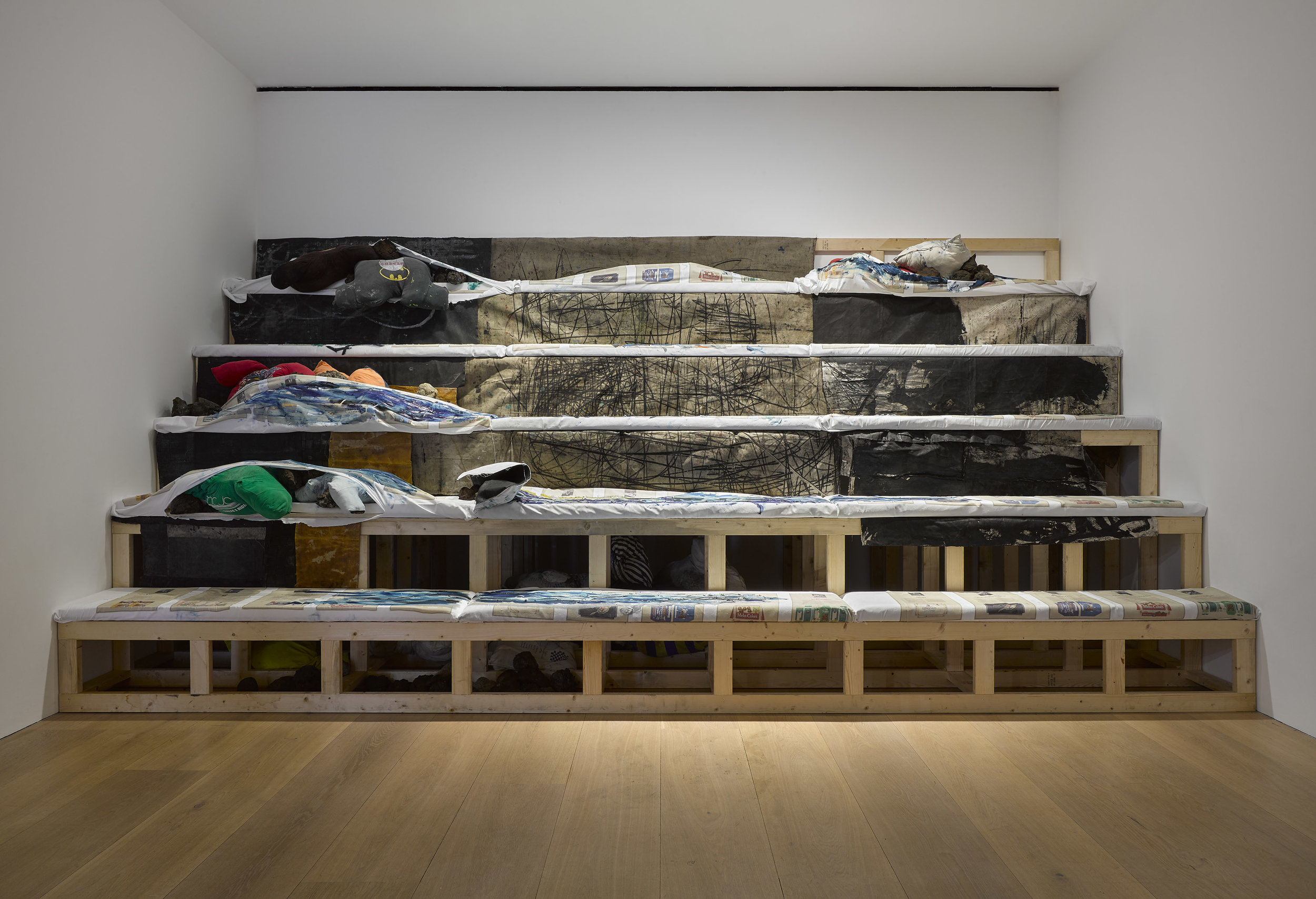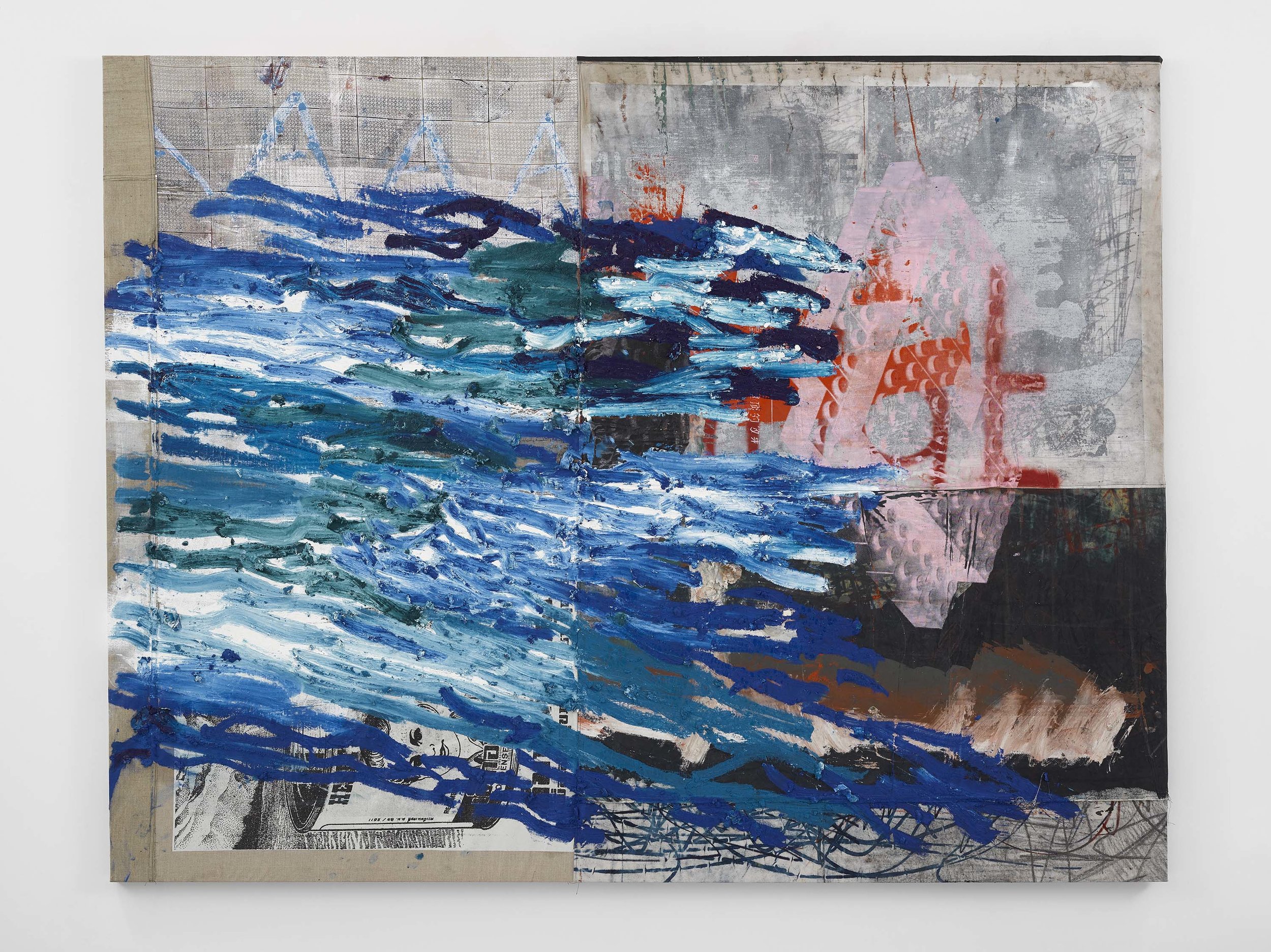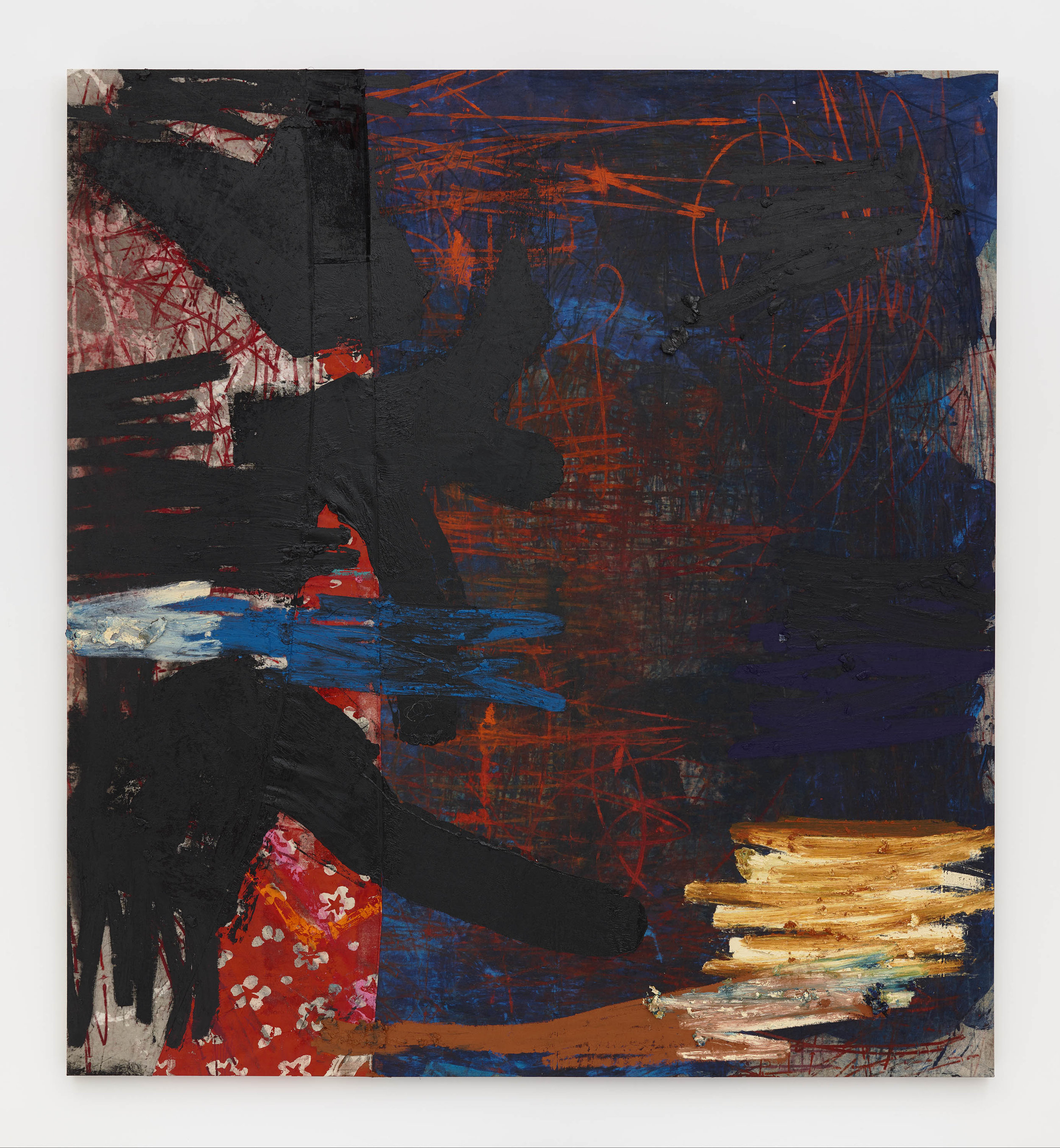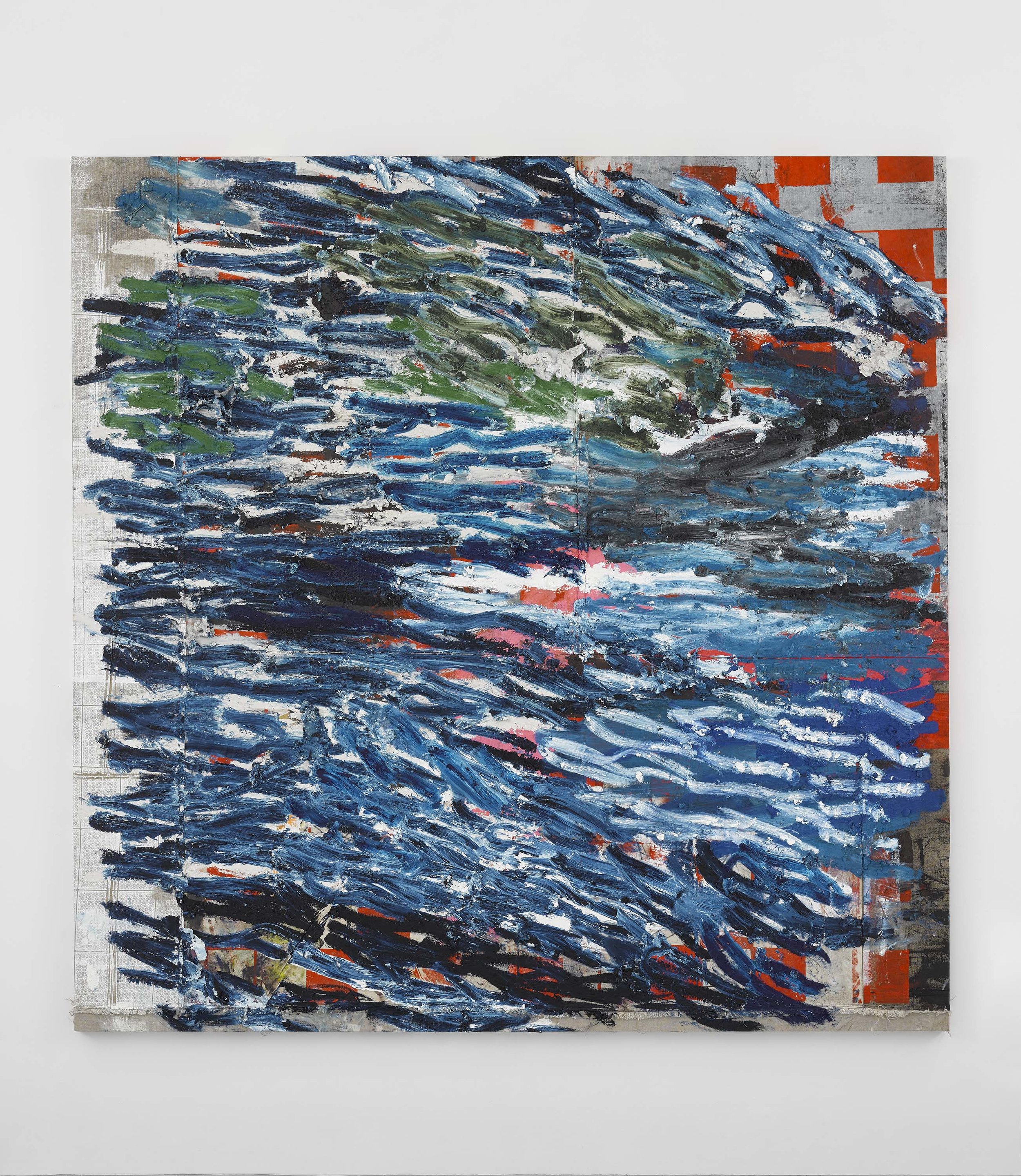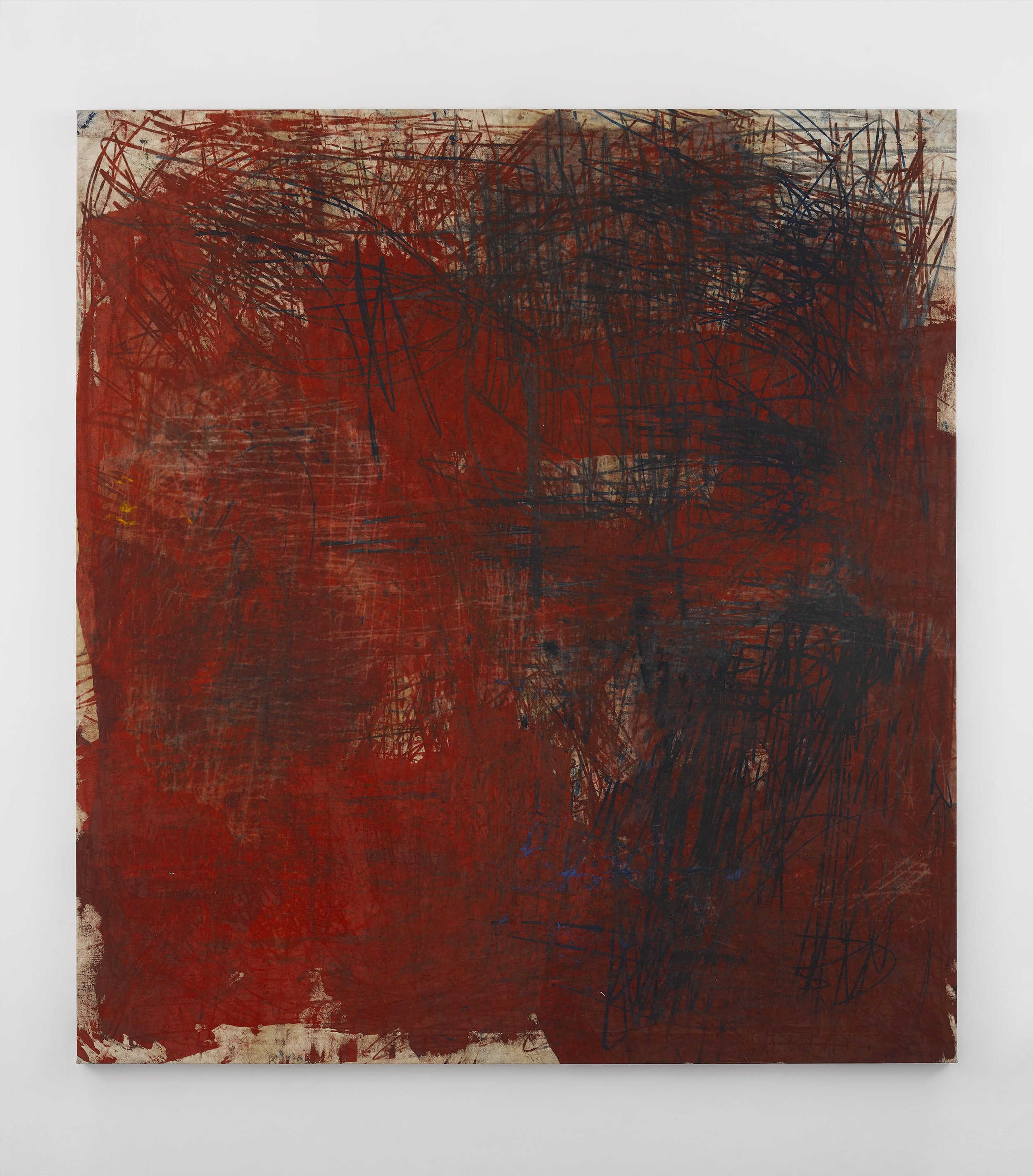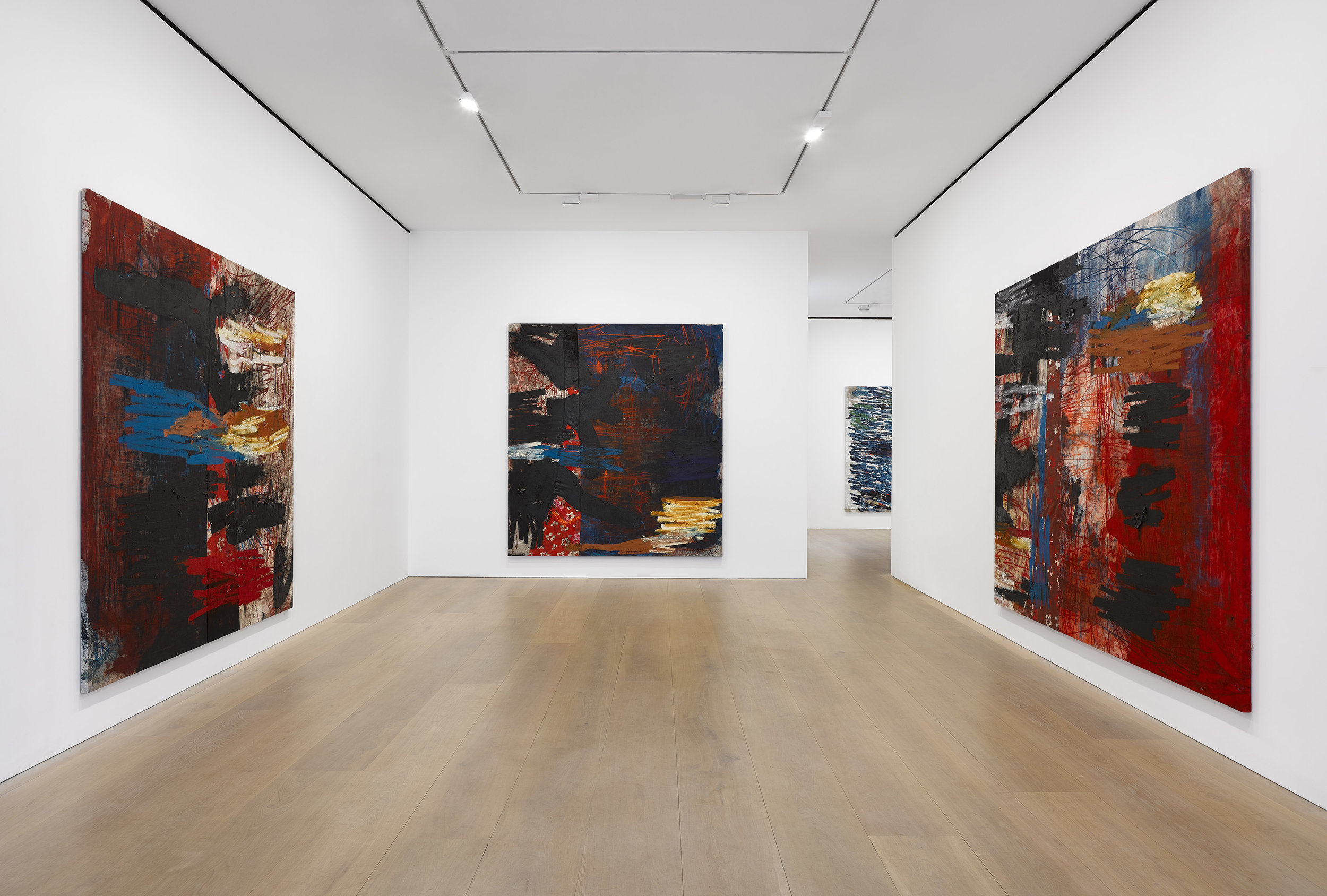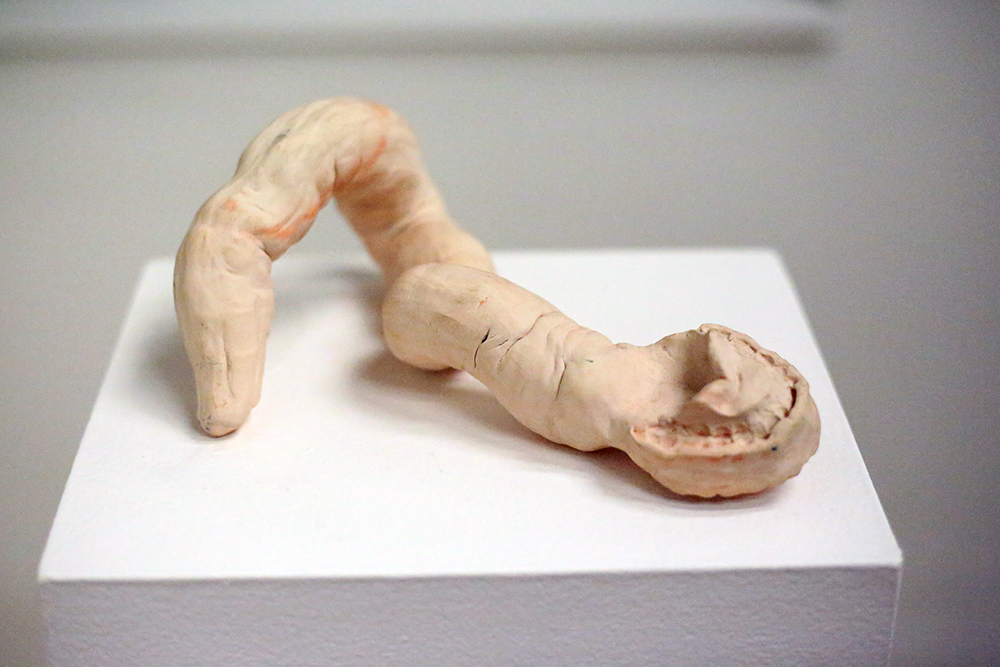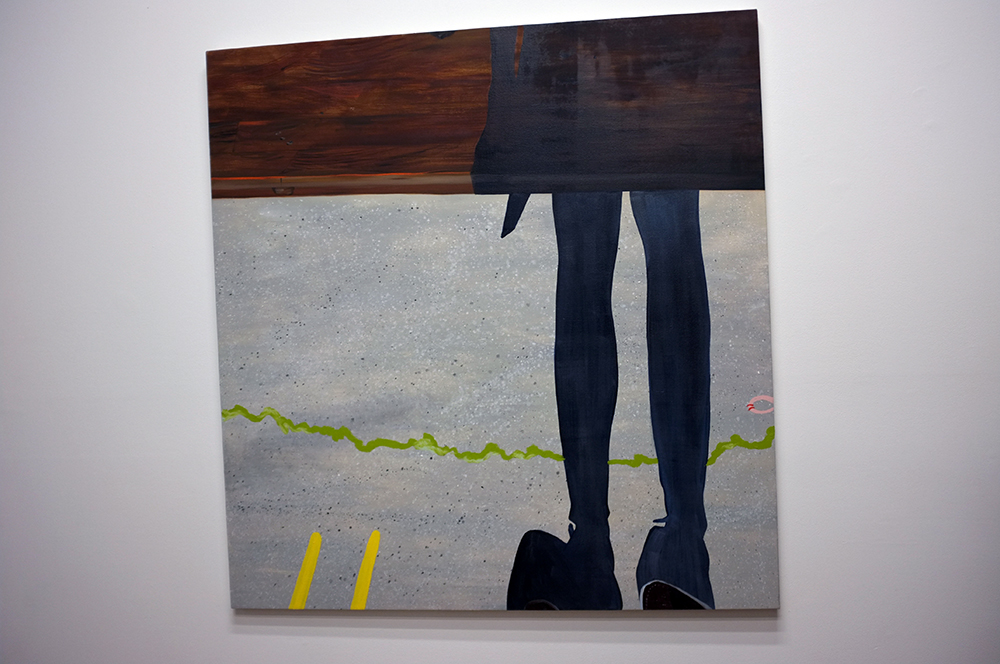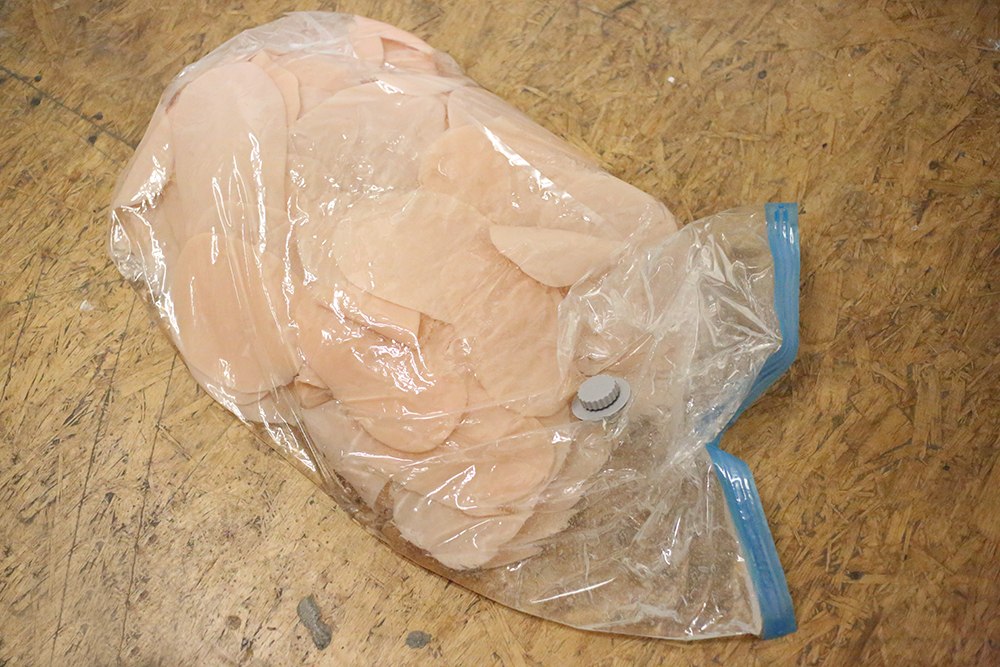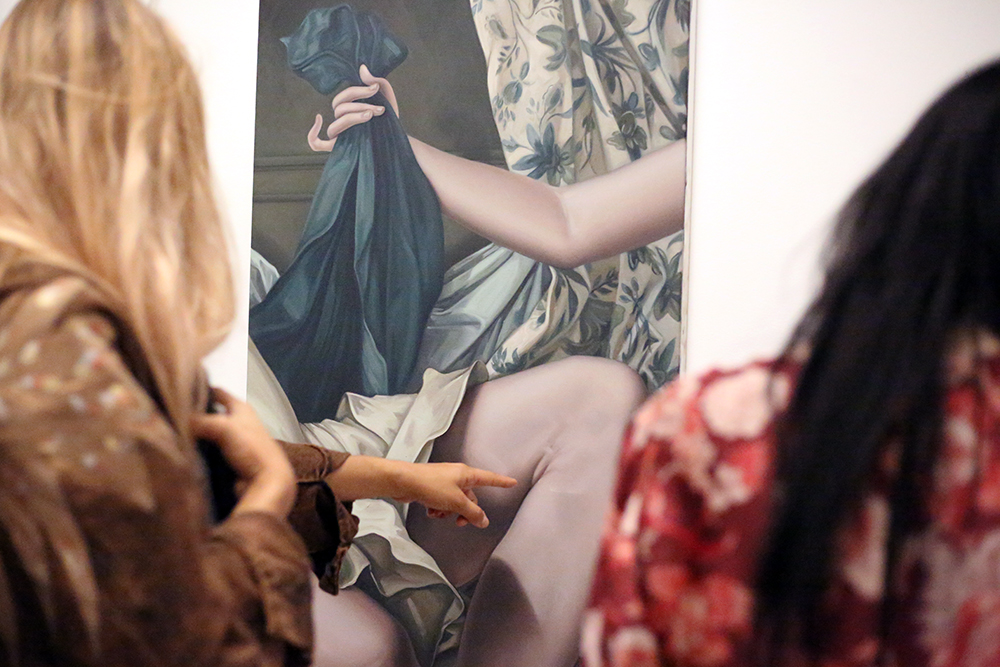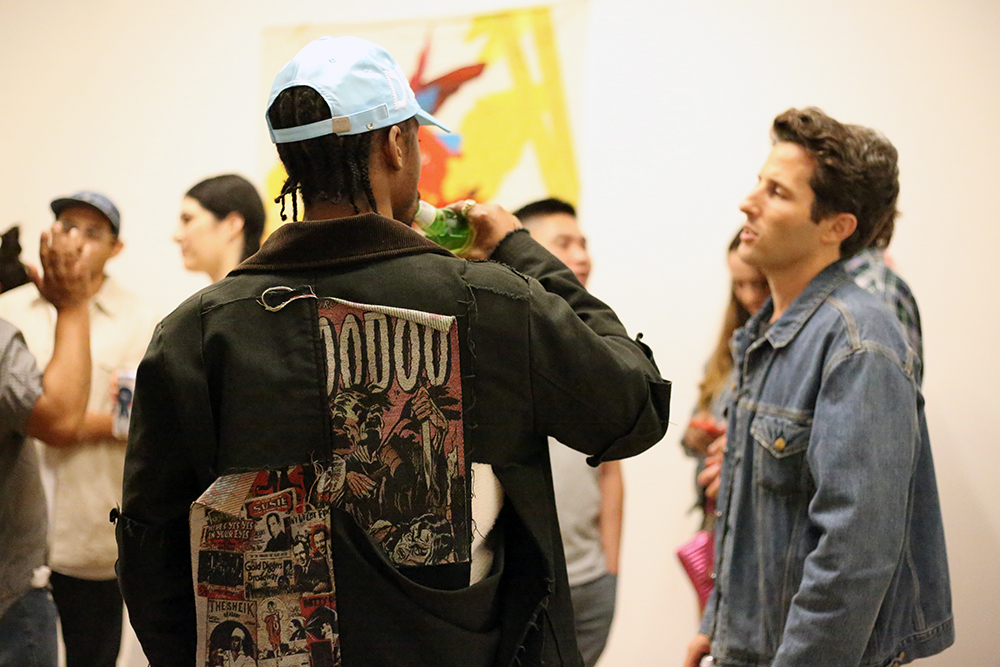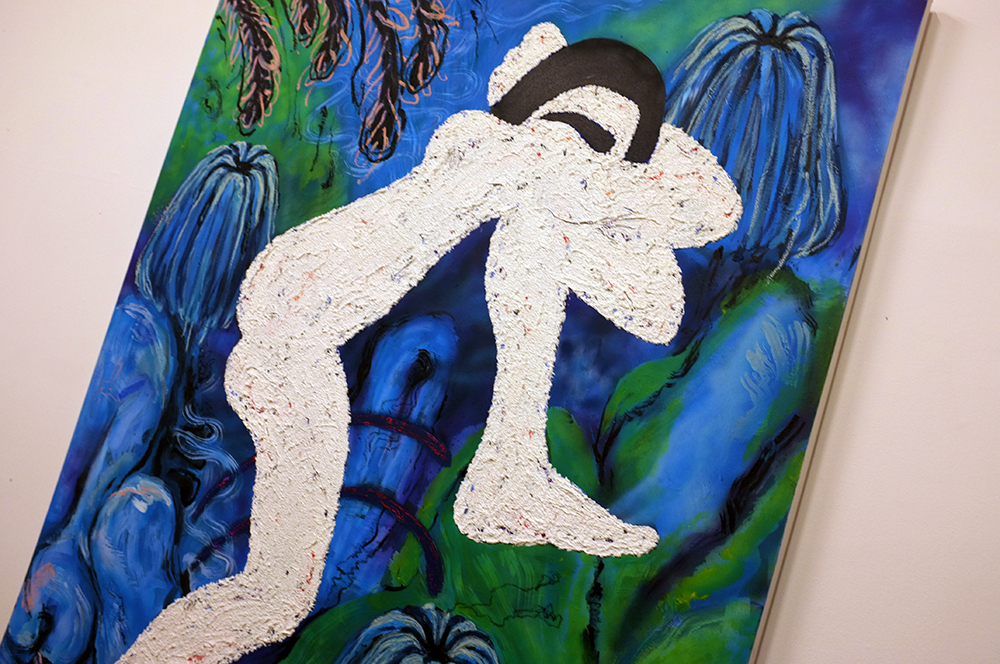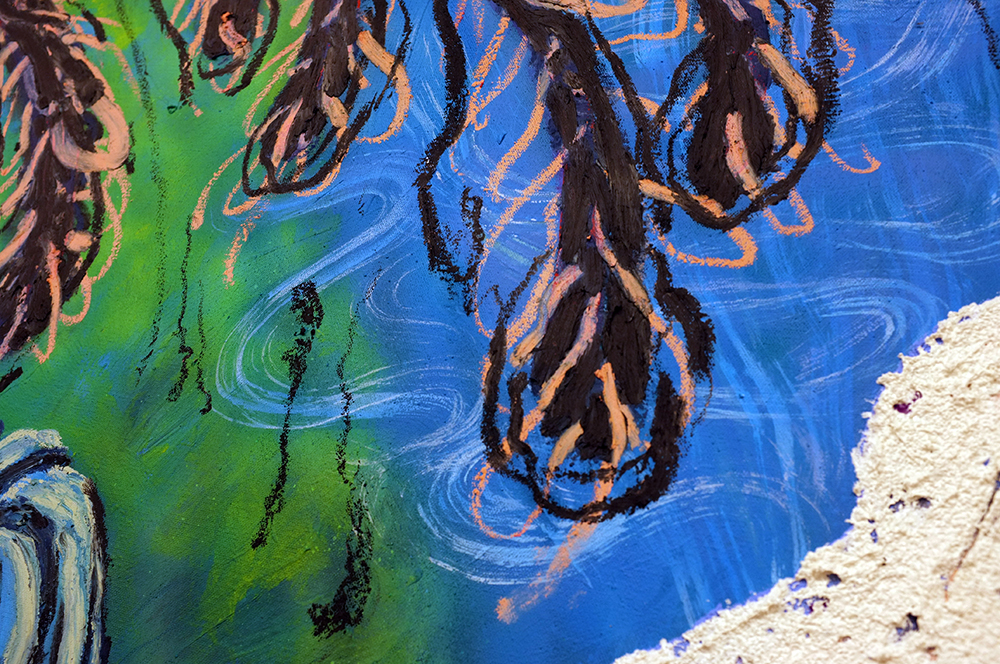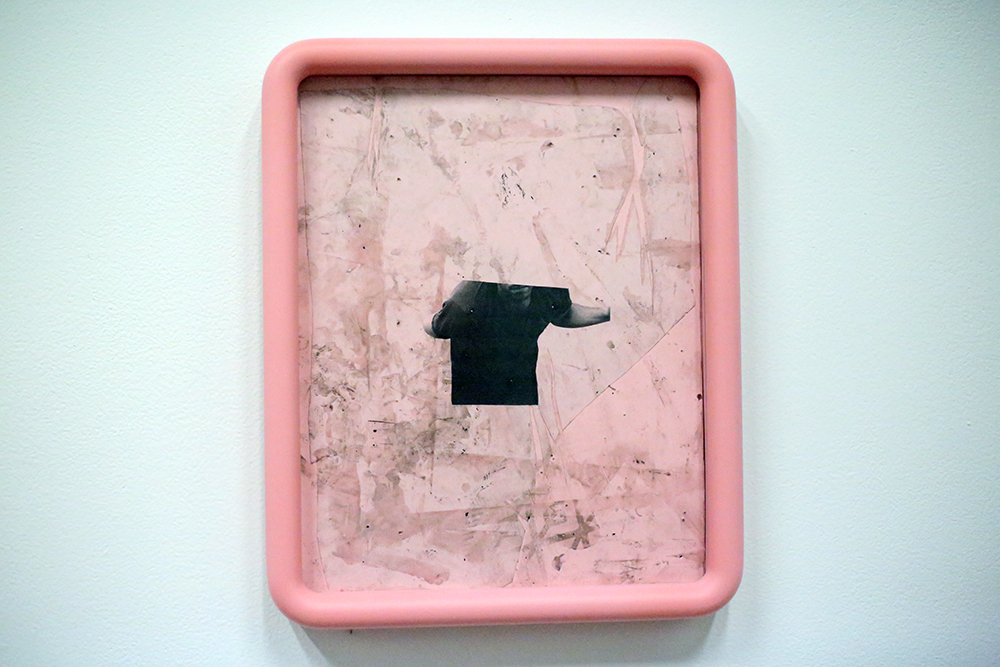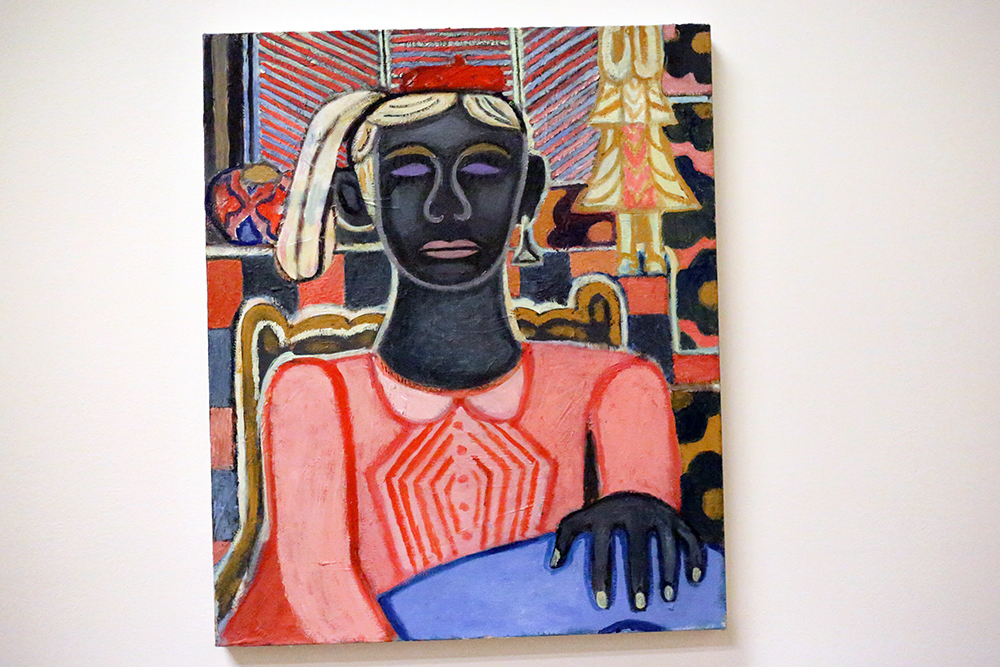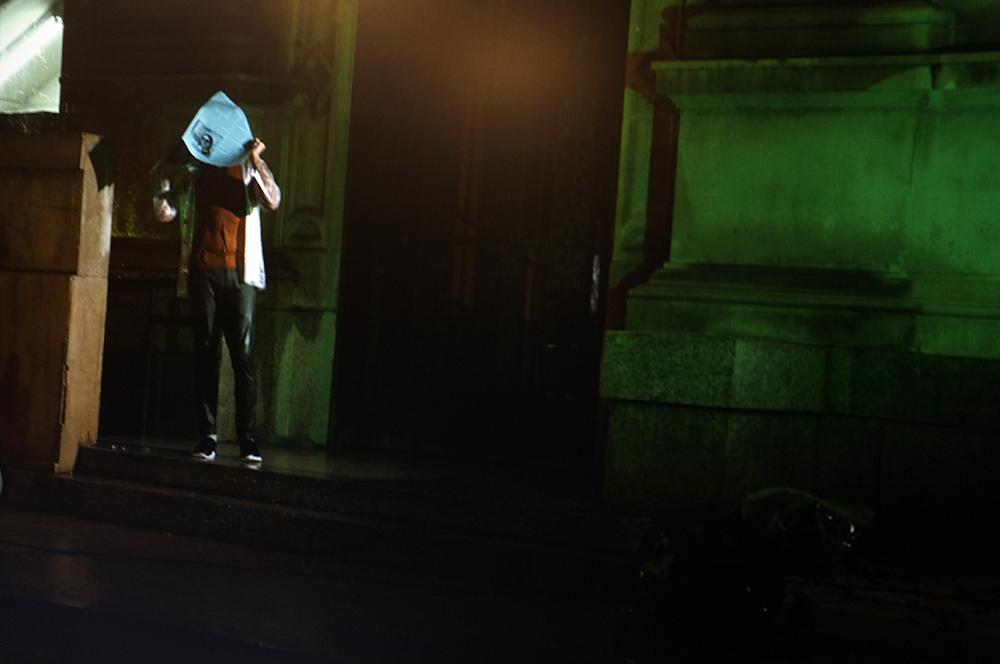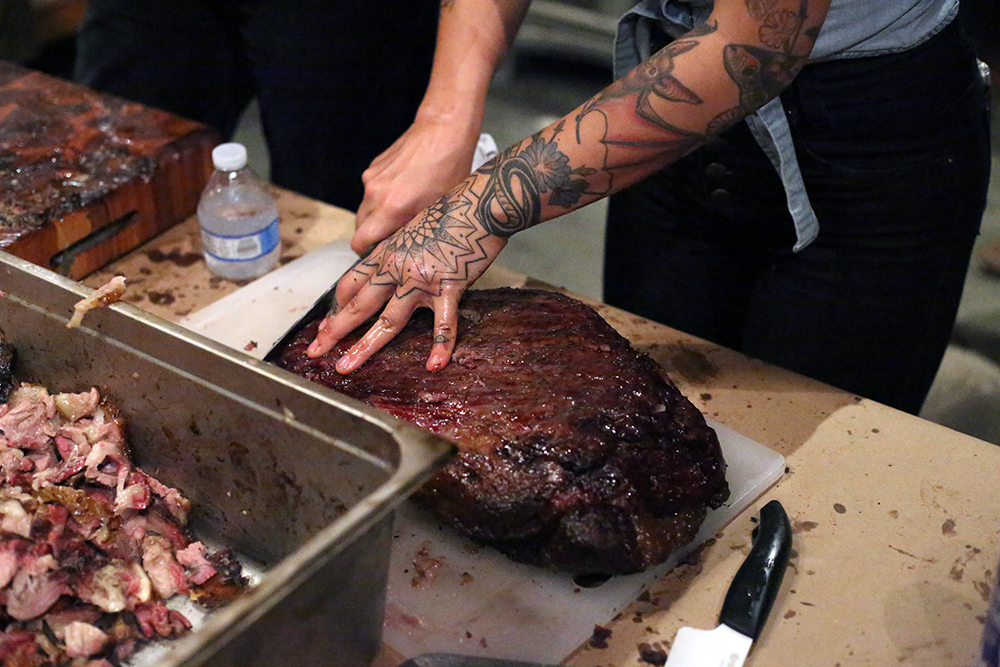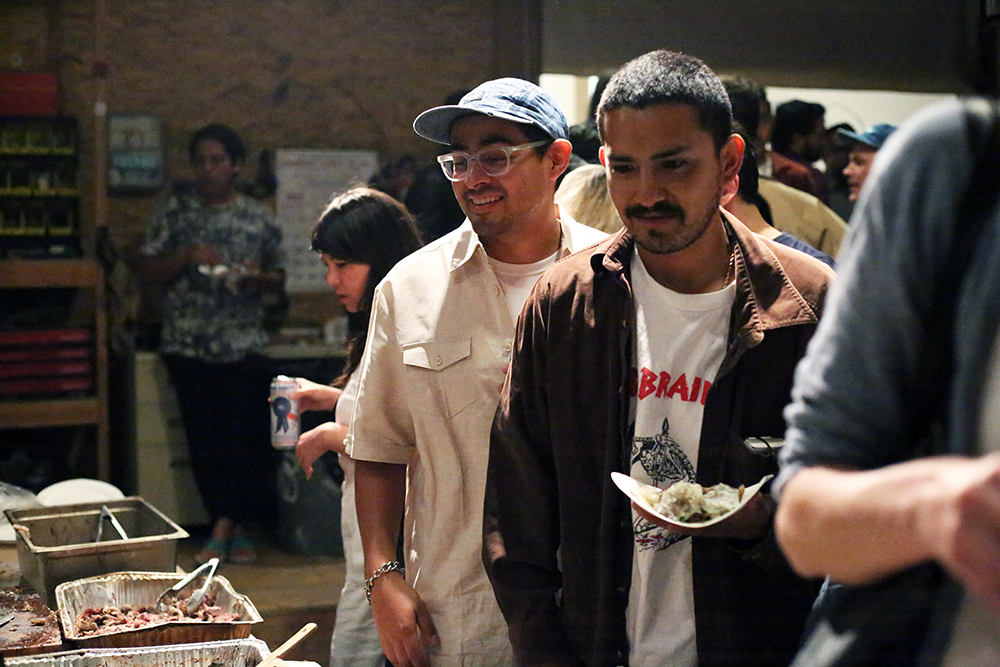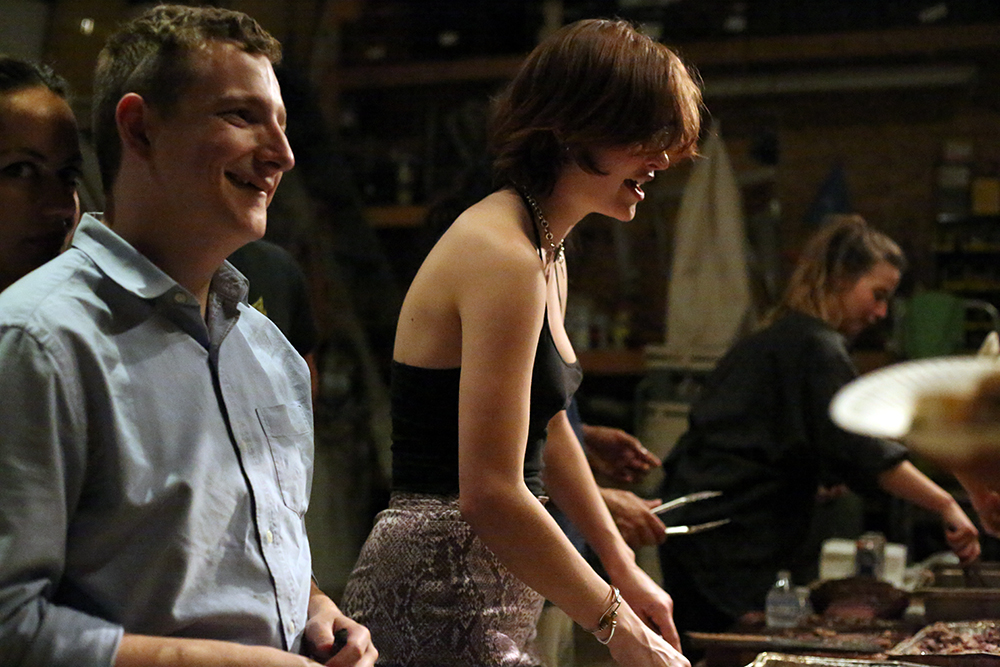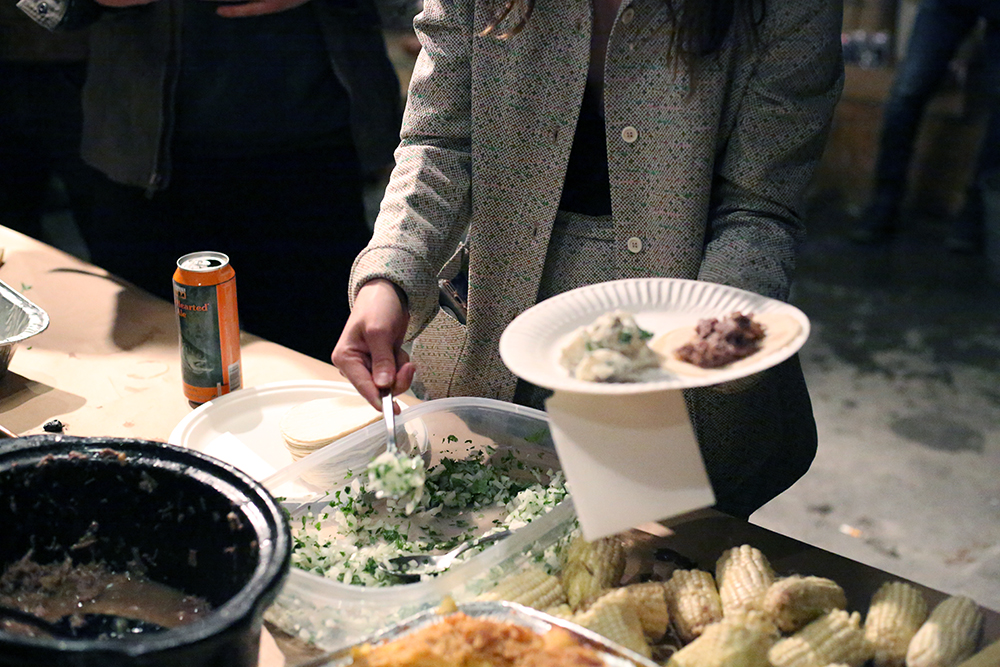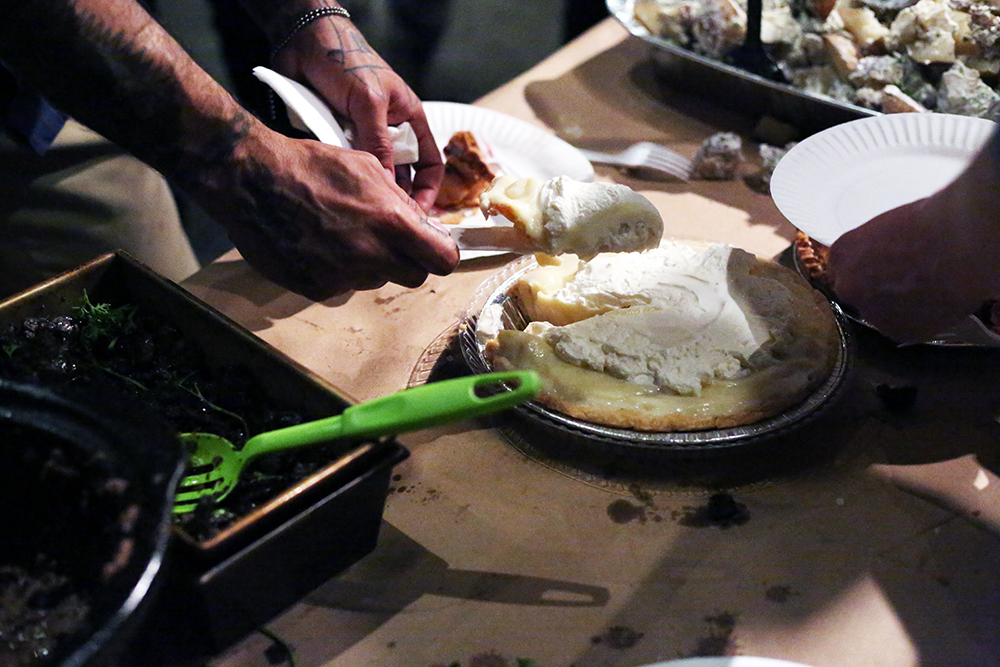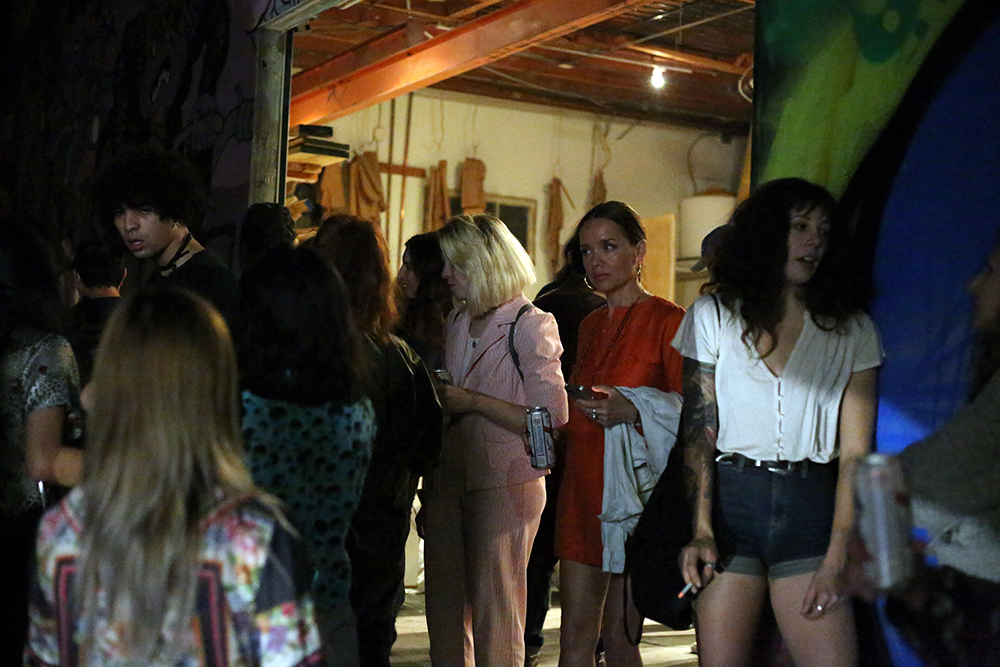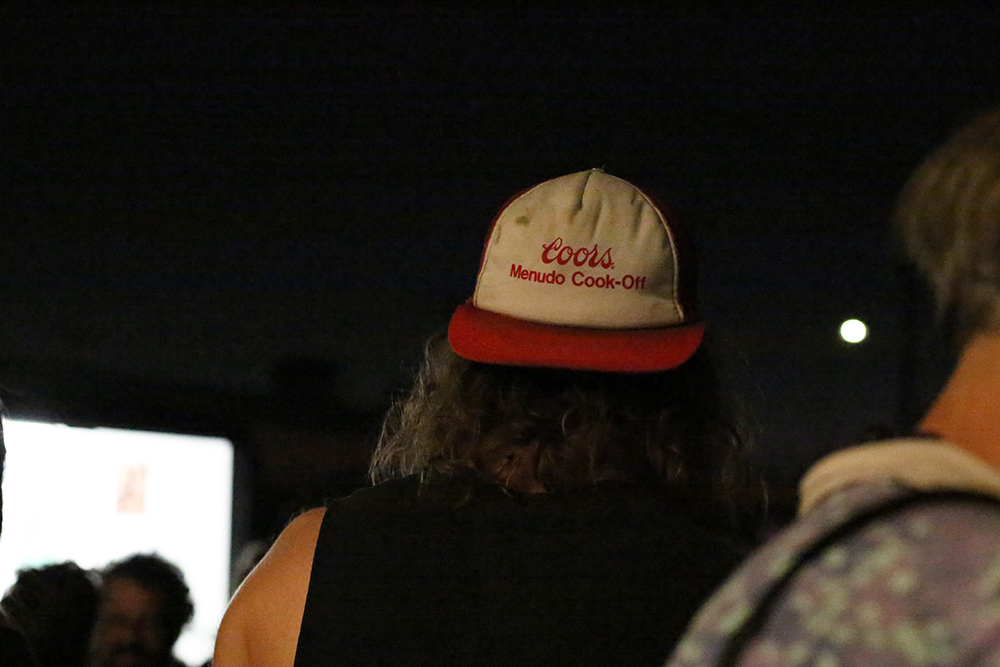Most of us are so used to reading that we forget that each letter is a shape and each word is a composition. The type we read every day–in emails and books, on packaging and signs–has a significant aesthetic dimension. U.S. artist EJ Hauser has adopted graphic and typographic strategies for their philosophical purposes and works, revealing a new view of what we no longer see in everyday life among all the texts. EJ Hauser’s quasi-abstract, fabric-like paintings are composed of layers of pixels, text fragments, and chimerical figures that refer to networks both in nature and the plant world, as well as to digital systems and interconnections in our human communication world. For them, letters form a sculptural framework, a compositional structure that sometimes dissolves into pure text images, sometimes leads to text in combination with images, or sometimes is buried under successive layers of paint. Some are very explicit, others require a closer look to find the spine and curves of different letters jumbled together to dissolve the boundary between word and image, mixed with chimerical figures and totemic symbols representing the interconnectedness of life on earth. EJ Hauser is interested in the Wood Wide Web, the complex subterranean web on the planet. Plant communication takes place via the mycelium, a network of microscopic fungi beneath the forest floor, through which information is exchanged. This is not unlike the way we are connected today through our cell phones, social media, and the “invisible” Internet.
Song of Summer is on view through October 14th at Haverkampf Leistenschneider, Mommsenstraße 67, 10629 Berlin.

